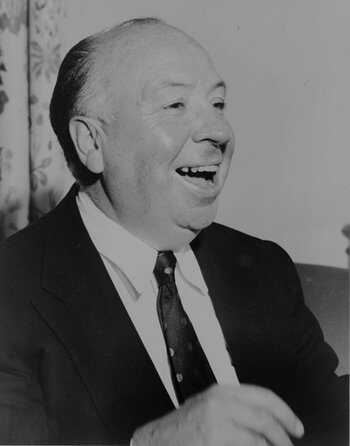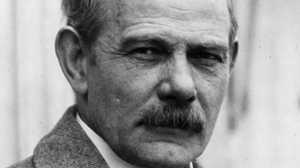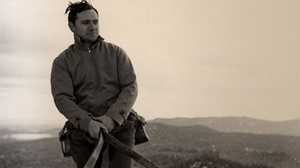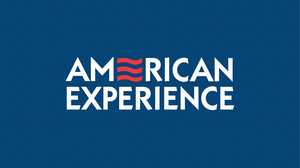Hitchcock's North by Northwest

Some of the most famous images of Mount Rushmore are from Alfred Hitchcock's 1959 classic spy movie, North by Northwest. Ernest Lehman, the screenwriter, recalled being asked by "Hitch" to come up with a movie idea. They talked about what they might do. The director murmured, "I always wanted to do a chase across the faces of Mount Rushmore." Lehman then set out to do some research:
"[I] hired a forest ranger on his weekend off, and started climbing one of the faces of Mount Rushmore. Halfway to the top, I looked down dizzily. 'I'm a screenwriter. What am I doing up here?' I cried. 'I could get killed!'
"I climbed down, bought a Polaroid camera, and had the forest ranger photograph the entire top of the monument. It turned out there was no place up there for a scene."
The lack of room to stage a movie scene turned out to be irrelevant. In an after-dinner speech, Hitchcock told the story of how he tried to get permission to film:
"In North by Northwest during the scene on Mount Rushmore I wanted Cary Grant to hide in Lincoln's nostril and then have a fit of sneezing. The Parks Commission [sic] of the Department of Interior was rather upset at this thought. I argued until one of their number asked me how I would like it if they had Lincoln play the scene in Cary Grant's nose. I saw their point at once."
In fact, Rushmore authories were adamant that the national monument was not a suitable setting for Hitchcock's planned cinematic capers. Lehman (whose first drafts of the screenplay were titled "The Man in Lincoln's Nose") was not bothered by the National Park Service's lack of permission to film scenes of violence on location. "No problem," he recalled. "Gifted production designer Robert Boyle created the amazing Faces of the Presidents on the sound stages of MGM."
The cost of the model Mount Rushmore and the Frank Lloyd Wright-style ranch house built on a Hollywood set for the movie was over $50,000 — and the house was almost as expensive as the sculpture. There is no evidence that Hitchcock, in deciding to use a Wright-style design in his film, was aware that Gutzon Borglum, the designer and artist of the monument, had actually once asked Frank Lloyd Wright to design a house for him. In a letter to Wright dated October 7, 1935, Borglum had written the famous architect, "I am planning another house but you must build it for me. I have told the press so." Wright, upon visiting Borglum in 1935, wrote in an essay that "human nature, let us hope eventually nature's higher nature, found its hand for this [mountain carving] in Gutzon Borglum's master hand."
Frank Lloyd Wright's architecture and Gutzon Borglum's sculptural masterpiece visually express the theme of Hitchcock's movie, about a man pursued from the East to the true America of the heartland — even if Hitch had to build both American icons himself, on a back lot in Southern California.







